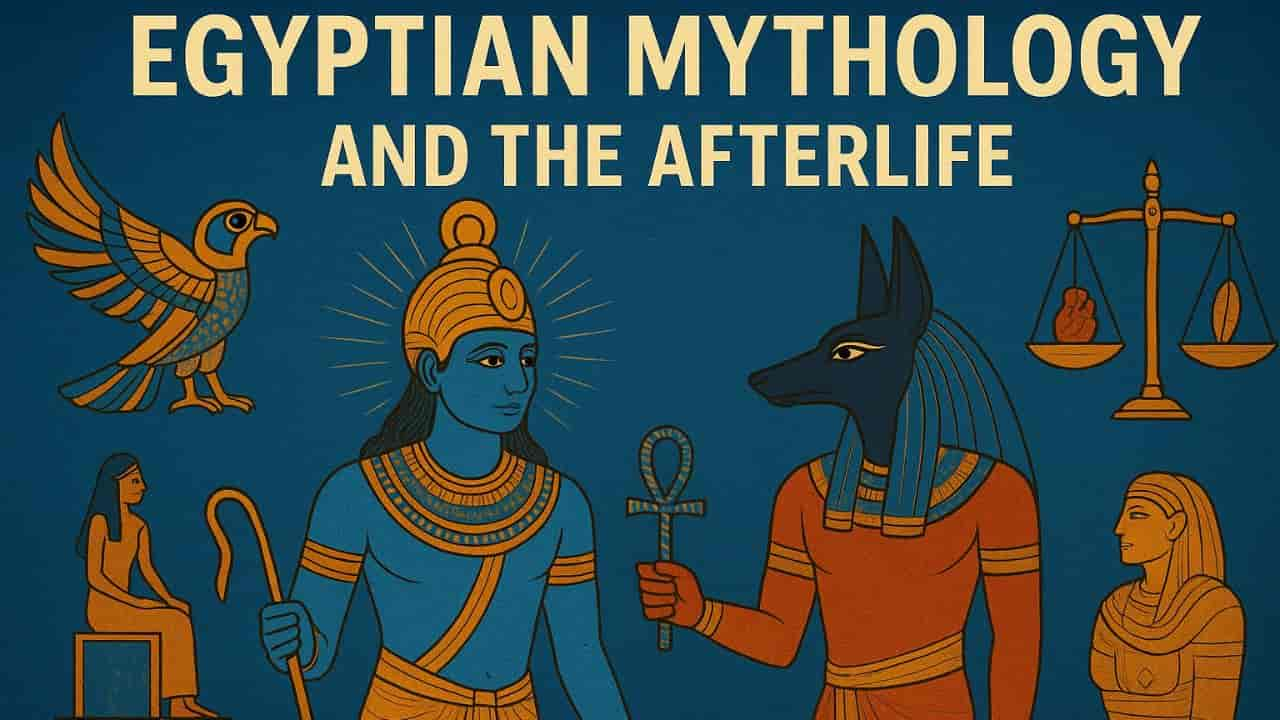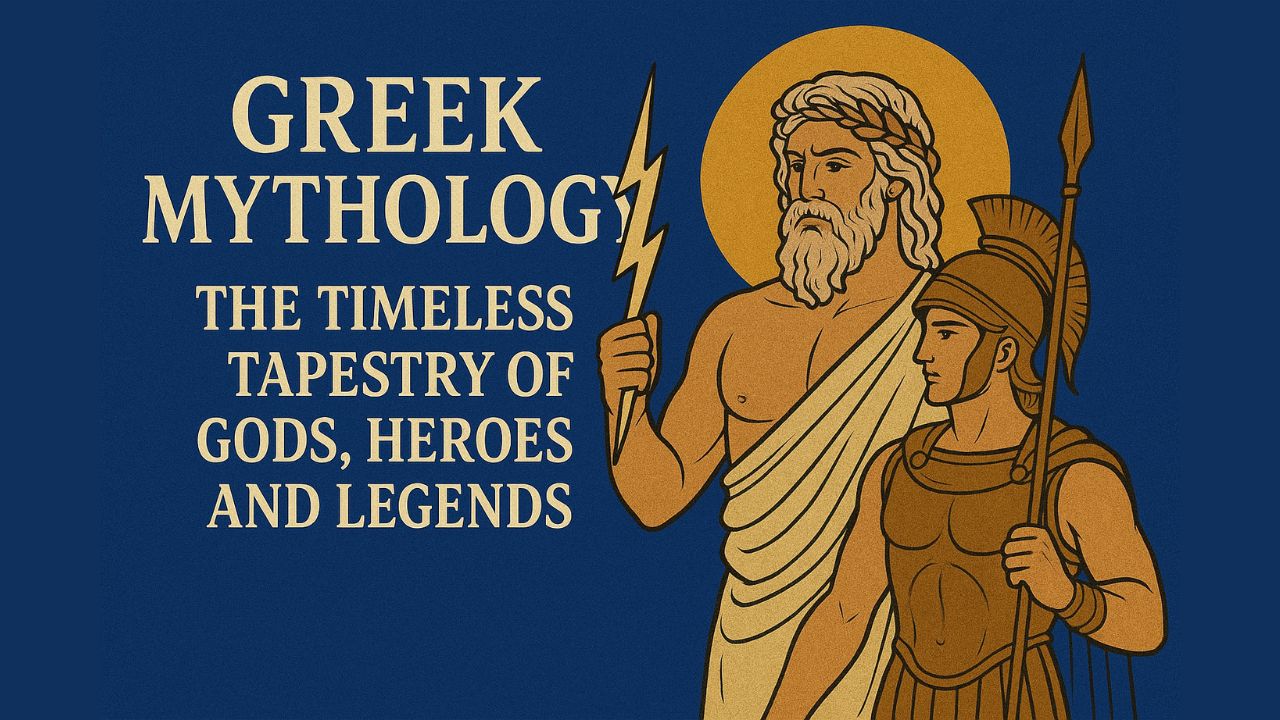Egyptian Mythology: Death as a Journey, Not an End
For the ancient Egyptians, death was not the end of life but the beginning of another chapter.
They believed that existence extended beyond the grave and that how one lived determined how one would be remembered and rewarded in the afterlife.
With gods like Osiris and Anubis at the center of this journey, Egyptian mythology reveals a worldview where morality, justice, and memory shaped immortality.
It is a tradition that continues to inspire us to think about legacy, responsibility, and the meaning of life itself.
The Story of Osiris: Resurrection and Hope
One of the most famous myths in Egyptian Mythology is the story of Osiris.
A wise and just king, Osiris was murdered by his brother Set, who envied his power. Set cut his body into pieces and scattered them across Egypt. Yet Osiris’s devoted wife, Isis, refused to let him be lost forever. With perseverance and divine magic, she gathered his remains and restored him to life.
Although Osiris did not return to the living world, he became ruler of the underworld. His resurrection symbolized hope: just as Osiris triumphed over death, so too could ordinary people hope for renewal after their earthly life ended.
The myth turned death into something less fearful and more meaningful, offering assurance that life continued in another form.
Anubis: The Guide of Souls
If Osiris represented resurrection, Anubis embodied guidance.
With his jackal’s head and black form, Anubis was seen as the protector of graves and the one who escorted souls to the afterlife. He was the god of embalming and mummification, ensuring that the dead were prepared for their journey.
For Egyptians, preserving the body was not about clinging to appearances but about safeguarding the soul’s passage. Anubis’s presence gave people comfort: even in death, they were not alone. They would be led, step by step, toward judgment.
Egyptian Mythology: The Weighing of the Heart
The Weighing of the Heart ceremony was central to Egyptian beliefs about the afterlife.
In the Hall of Ma’at, the departed would stand in front of Osiris. Anubis would place the person’s heart on a golden scale and weigh it against the feather of Ma’at, the goddess of truth and justice.
If the heart was lighter or equal to the feather, it meant a life lived honestly and with compassion. The soul was then welcomed into the eternal paradise known as the Field of Reeds.
If, however, the heart was heavy with lies, greed, or cruelty, it would be devoured by Ammit, a terrifying creature part lion, crocodile, and hippopotamus.
For Egyptians, this was the greatest punishment: not torture, but total annihilation and the loss of memory.
Ma’at: The Principle of Cosmic Balance in Egyptian Mythology
The weighing ceremony reflected the importance of Ma’at, the divine principle of balance, truth, and justice.
To live “in Ma’at” was to live in harmony with the cosmos, with others, and with oneself. Pharaohs ruled in the name of Ma’at, judges invoked her in courts, and ordinary people sought to align their daily actions with her values.
This belief shows that morality was not a private choice but part of maintaining universal order. To live unjustly was to tip the scales of the world itself.
What does Egyptian mythology's "Book of the Dead" mean?
Egyptians believed the afterlife was full of trials, and so they created texts to guide souls on their journey.
The most famous was the Book of the Dead, a collection of spells, prayers, and instructions often buried with the deceased. These texts included charms to ward off dangers, hymns to invoke gods, and even “confessions of innocence” where the soul declared, “I have not stolen, I have not lied, I have not killed.”
The Book of the Dead reflects a culture that saw morality as preparation for eternity. Goodness was not just an earthly virtue but a passport to immortality.
Rituals of Remembrance and Protection
Beyond texts and myths, Egyptian funerary practices themselves reveal deep beliefs about the afterlife.
- Tombs were filled with food, tools, amulets, and even miniature figurines called ushabti, which were meant to serve the deceased in the next world.
- Priests performed rituals to activate protective spells, while family members made offerings at tombs to keep the spirit nourished.
- Even architecture reflected these convictions: the pyramids were not simply monuments to power but bridges between worlds, designed to ensure the pharaoh’s safe journey to eternity.
- Every detail, from burial masks to painted walls, was part of a spiritual technology aimed at preserving memory and ensuring resurrection.
Memory as Immortality in Egyptian Mythology
More than anything, Egyptians believed that memory was life’s true continuation.
Inscriptions on tombs often declared: “To speak the name of the dead is to make them live again.” Legacy was tied not to material wealth but to how one’s name and deeds were remembered.
This is why people invested in tombs, art, and prayers, not simply for show but to ensure remembrance. Yet remembrance could not be faked. A corrupt person might leave a grand monument, but if their heart was heavy, they would be erased in the afterlife.
In contrast, a humble person who lived truthfully could live forever in the memory of both people and gods.
Lessons for Modern Life in Egyptian Mythology
The wisdom of these myths still applies today.
We often chase success, recognition, or possessions, but Egyptian beliefs remind us that legacy is not about wealth or status. It is about truth, compassion, and balance. Every choice adds weight or lightness to the heart.
In a modern world filled with distractions and competition, the Egyptian vision offers a more enduring measure of success: being remembered with respect, leaving behind goodness, and living in a way that honors truth.
Just as the Egyptians placed great care in preparing for eternity, we, too, can prepare by investing in kindness, nurturing relationships, and creating works that outlast us. Legacy is not a stone monument but the ripples we leave in the lives of others.
Death as Transformation in Egyptian Mythology
Rather than fearing death, Egyptians approached it with preparation and reverence.
Their rituals, hymns, and funerary texts were not obsessed with gloom but with guidance, ensuring the soul’s safe passage and eternal renewal.
Death was a transformation, not a loss.
This perspective encourages us to reframe our own views of mortality. Instead of dreading the inevitable, we can focus on living with integrity so that our memory, our Ma’at, remains intact.
To the Egyptians, each day was an opportunity to “live in truth,” so that when the heart was weighed, it would not falter. Seen in this way, death becomes less an end and more a mirror, reflecting the life we chose to live.
The True Meaning of Legacy
Egyptian mythology teaches us that immortality does not come from monuments or riches but from morality and memory.
A light heart, a truthful life, and a legacy of compassion are what endure. Osiris’s resurrection, Anubis’s guidance, and the Weighing of the Heart all remind us that what matters most is not what we possess but how we live.
For the Egyptians, to be remembered was to live forever. For us today, the lesson remains the same: our true legacy is carried in the hearts of others.


